
Stenocactus vaupelianus Photo by: Peiffer Clement
Origin and Habitat: Mexico (Hidalgo)
Synonyms:
See all synonyms of Stenocactus vaupelianus
Description: Stenocactus vaupelianusSN|6182]]SN|6182]] is a well-known in horticulture cactus species with a pale green epidermis, denser and thinner white radial spines, yellow to tan coloured spines and yellowish flowers. However its classification is controversial and all available informations about this taxon can only be described as contradictory, and most of the the plants labelled Stenocactus vaupelianusSN|6182]]SN|6182]] don’t fits at all the original description of Dietrich. This species is considered Data Deficient because there is a general lack of understanding on the taxonomic position of the species within the genus and thus is it no possible to define either the spatial or systematic limits of the taxon.
Habit: Usually solitary,
Stem: Globular glaucous stems, 7 to12 cm in diameter and across and has a woolly, spiny apex.
Ribs: About 35 (30 to 40) slender ribs deeply notched wavy and corrugated.
Areoles: Round large at first covered with white felt.
Central spines: 1 or 2 (to 4), growing one above the other, of variable form and length up to 7 cm long. They are sharp and needle-like, or sometimes flattened, pointing upward at first and then outward, yellow or brownish, brownish-black at their apex and somewhat reddish lower down.
Radial spines: (10 to) 15 to 25 slender, almost transparent white, 1-1.5 cm long straight or slightly curved, and radially arranged, overlapping each other above the ribs.
Flowers: The flowers are 2 (2,5) cm. long, often remain squeezed between the apical spines, and have pale yellow, creamy-white (or pink) segments with a darker mid-stripe.
Subspecies, varieties, forms and cultivars of plants belonging to the Stenocactus vaupelianus group
Bibliography: Major references and further lectures
1) Edward Anderson “The Cactus family” Timber Press, Incorporated, 2001
2) Nathaniel Lord Britton, Joseph Nelson Rose “Cactaceae: Descriptions and Illustrations of Plants of the Cactus Family” vol. 4 The Carnegie Institution of Washington, Washington 1923
3) James Cullen, Sabina G. Knees, H. Suzanne Cubey "The European Garden Flora Flowering Plants: A Manual for the Identification of Plants Cultivated in Europe, Both Out-of-Doors and Under Glass" Cambridge University Press, 11/Aug/2011
4) David R Hunt; Nigel P Taylor; Graham Charles; International Cactaceae Systematics Group. "The New Cactus Lexicon" dh books, 2006
6) Guadalupe Martínez, J., Sánchez , E., Bárcenas Luna, R. & Gómez-Hinostrosa, C. 2013. Stenocactus vaupelianus. In: IUCN 2013. "IUCN Red List of Threatened Species." Version 2013.2. <www.iucnredlist.org>. Downloaded on 07 January 2014.
 Stenocactus vaupelianus Photo by: Valentino Vallicelli
Stenocactus vaupelianus Photo by: Valentino Vallicelli Stenocactus vaupelianus Photo by: Cactus Art
Stenocactus vaupelianus Photo by: Cactus Art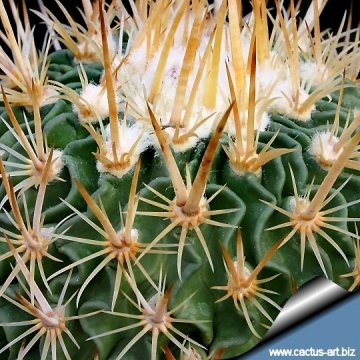 Stenocactus vaupelianus Photo by: Cactus Art
Stenocactus vaupelianus Photo by: Cactus Art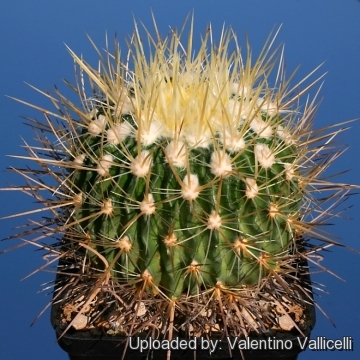 Stenocactus vaupelianus Photo by: Valentino Vallicelli
Stenocactus vaupelianus Photo by: Valentino Vallicelli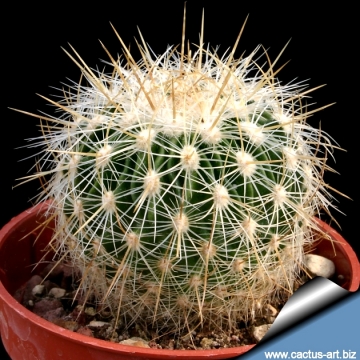 Stenocactus vaupelianus Photo by: Cactus Art
Stenocactus vaupelianus Photo by: Cactus Art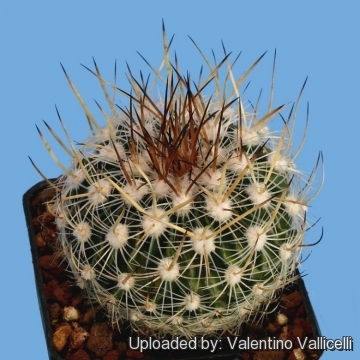 Stenocactus vaupelianus Photo by: Valentino Vallicelli
Stenocactus vaupelianus Photo by: Valentino Vallicelli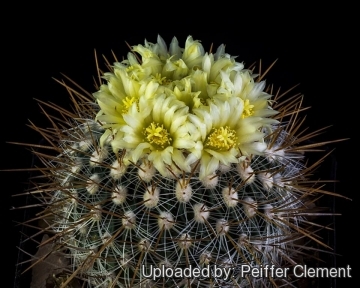 Stenocactus vaupelianus Photo by: Peiffer Clement
Stenocactus vaupelianus Photo by: Peiffer ClementSend a photo of this plant.The gallery now contains thousands of pictures, however it is possible to do even more. We are, of course, seeking photos of species not yet shown in the gallery but not only that, we are also looking for better pictures than those already present.
Read More... Cultivation and Propagation: Small growing and easy to to care and flower. Because of it’s small size makes a great potted plant specimen, great for beginning collectors.
Growth rate: It is a slow growing species.
Soil: It grows well in a very draining mineral potting substrate, but it isn't picky about soil.
Repotting: Use pot with good drainage. Eventually, as they become mature, they attain a maximum size of 8-10 cm (20) cm. However, old plants become senile and have a tendency to succumb to disease and a weak root system. At this stage, as is well known, they die suddenly. So, after they reach 10 cm in diameter grow them slowly, and adopt a new repotting period, using intervals of every 2 - 3 years. Additionally grow them under drier conditions or with stronger sunlight.
Watering: Water regularly during the summer so long as the plant pot is allowed to drain and not sit in a tray of water (It rots easily, especially if over wet). Let dry between watering. During hot weather you may need to water the plants more frequently so long as the plant is actively growing. From late September watering should be reduced to force the plant to go in to a state of semi dormancy, by October you should be back in to the winter watering regime. If the soil is allowed to be dry for too long root loss could follow but equally the same result would occur if the plants are both wet and cold. From March onwards the plant will begin to grow and watering should be increased gradually until late May when the plant should be in full growth.
Fertilization: Feed with a high potassium fertilizer in summer. Feeding may not be necessary at all if the compost is fresh then, feed in summer only if the plant hasn't been repotted recently. Do not feed the plants from September onwards as this can cause lush growth which can be fatal during the darker cold months.
Hardiness: When dormant, the plant is very cold tolerant (down to nearly -5° C or less), but when left out it is more sensitive to frost. During the summer it is best to keep the plants outside where the temperature can rise to over 30 C with no harm to the plant.
Exposure: They do need a lot of light to develop their typical spination, but different clones vary in their tolerance of full sunshine. However some protection in light shade is recommended during the hottest hours in summer. If kept too dark they may become overly lush and greener and could be prone to rotting due to over watering.
Uses: It is an excellent plant for container growing. It always looks good and stays small. It looks fine in a cold greenhouse and frame.
Rot: Rot is only a minor problem with cacti if the plants are watered and “aired” correctly. If they are not, fungicides won't help all that much.
Propagation: Seeds. (Usually shoots are not available, but it tillers more readily than most other species.) Remember that seedlings dislike strong light and dry conditions and need to be repotted frequently, or by the shoots of adult plants (if available). If you remove an offset, remember to let it dry for some days, letting the wound heal (cuttings planted too soon easily rot before they can grow roots). Lay it on the soil and insert the stem end partially into the substrate. Try to keep the cutting somewhat upright so that the roots are able to grow downward.

















